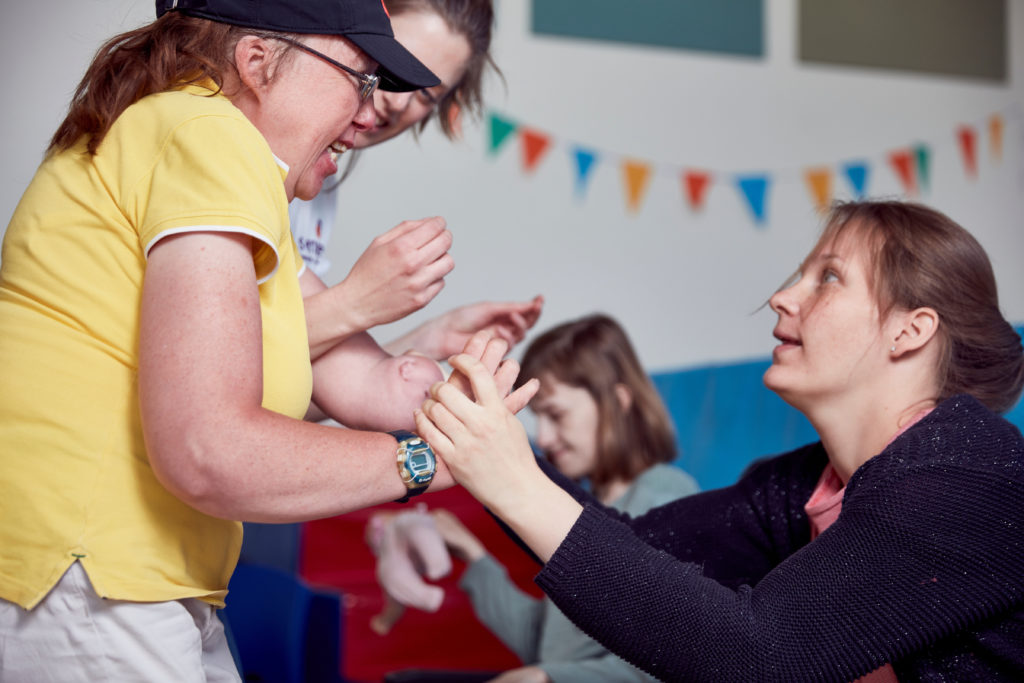Total communication
We all need to feel connected, and yet we all connect differently. That’s why, at Sense, we use a total communication approach that supports people to connect in the right way for each individual.

By using this approach, we make the complicated simple and empower people to communicate and express themselves – be it through speech or sign, touch or movement, gesture or sound, art or dance.
What is a total communication approach?
The total communication approach is about finding and using the right combination of communication methods for each person. This approach helps an individual to form connections, ensures successful interactions and supports information exchanges and conversations. A combination of methods are used, which reinforce each other and strengthen meaning for the individual.
Total communication is also about creating a positive environment that will help you communicate and interact.
For example, this may mean:
- Changing the lighting in the room.
- Reducing the amount of background noise.
- Moving position so that you can see or hear better.
- Reducing clutter or removing things that are distracting.
Methods of communication
Here are some examples of different formal and non-formal types of communication that can be used:
- Non-verbal: including body movements, breathing patterns and eye pointing. Textures, smells, temperature, intensive interaction and routine can also support communication by allowing an individual to anticipate what is going to happen next.
- Language-based communication: including speech, lip reading, Tadoma, deafblind manual alphabet, giving and receiving information in large print, braille and block alphabet, and sign systems, including British Sign Language (BSL) and Makaton. Sign systems may be independent sign, on body sign or hand under hand sign.
- Symbol systems: including using objects of reference (real objects and object symbols), Bliss, Widgit, Mayer-Johnson, Picture Exchange Communication System (PECS), line drawings, pictures and photographs.
These methods of communication can be used in any combination and will be individual to the person. At Sense, we work closely with each person to identify preferred methods and how to maximise understanding and expression.
When looking at communication it is important to understand the two different types of language skills, expressive and receptive. How somebody expresses themselves can form a foundation for learning and offer a starting point on which to build communication development.
Expressive communication is when you are sending a message, this may be in response to another person or to initiate communication. Receptive communication is when you receive a message from another person. An individual’s expressive and receptive communication skills may not be the same. People will use a combination of the communication methods listed above, both expressively and receptively. For example, a person may receive and understand information in sign language and need symbols to help reinforce the meaning but will use sign language and speech to express themselves.
The Sense total communication approach values and uses all methods of communication so that everyone we support can communicate, understand and be understood.
Get in touch
If you or a loved one have complex disabilities, you can reach out to our team for more information and advice about communication.
This content was last reviewed in April 2022. We’ll review it again next year.
